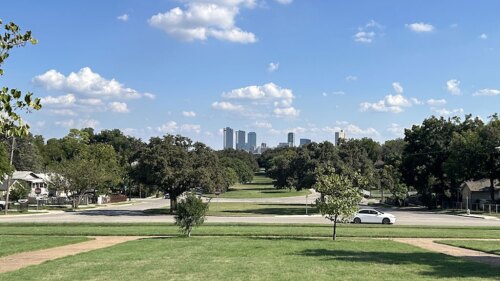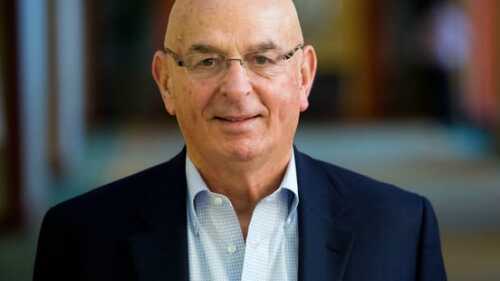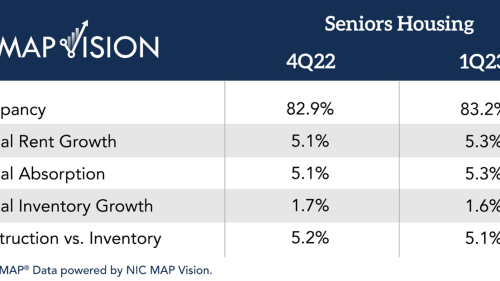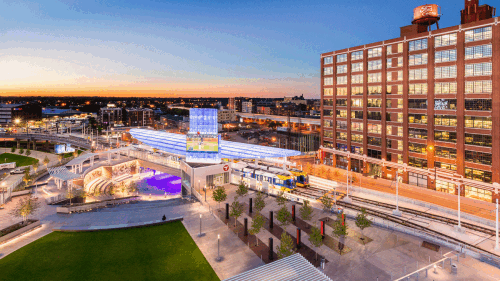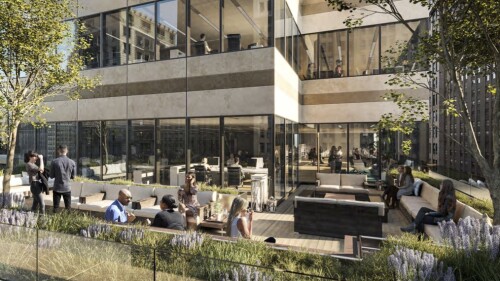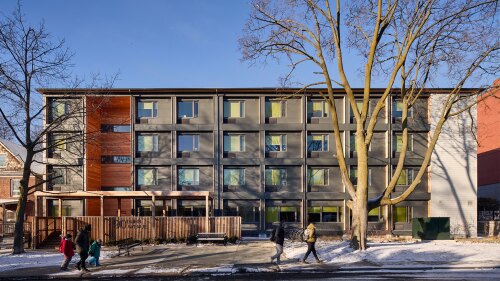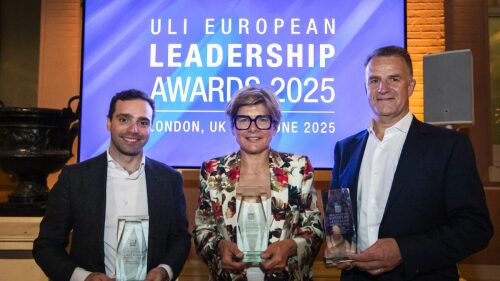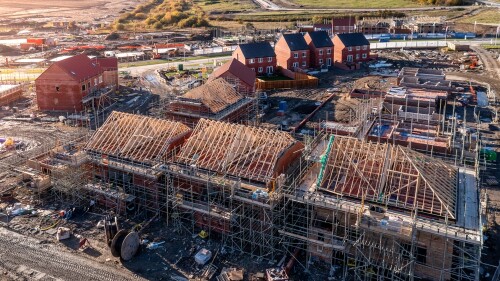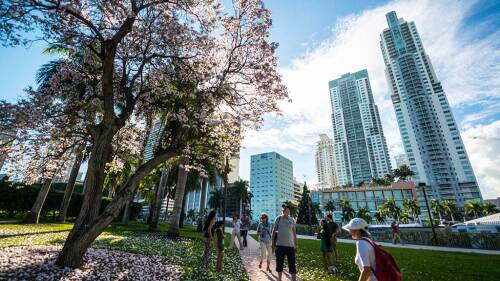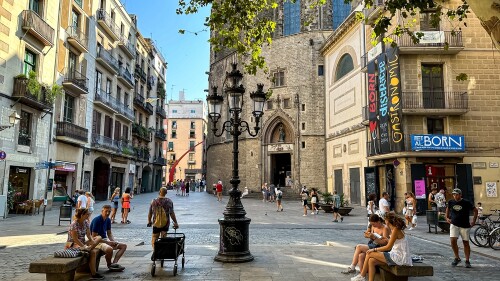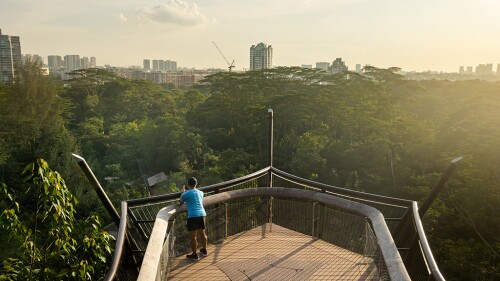Markets
Chicago
With no end in sight to the boom in urban and close-in suburban multifamily housing construction, developers are eager for ways to save money on ever-increasing land and construction costs. Experts speaking at the 2016 ULI Fall Meeting said that reducing parking requirements and increasing use wood-frame construction for buildings up to five stories could help keep costs in check.
PBS will broadcast a new documentary, 10 Parks That Changed America, on April 12th. Produced by WTTW in Chicago, the program identifies the 10 most influential urban parks in the country, from the era of America’s early settlers to the present day, ranging from the Squares of Savannah, Georgia, to the High Line of New York City.
Robotic vehicles, drones, and other cutting-edge technological advances could soon reshape urban land use as radically as the automobile once did. Here are some leaders’ thoughts on how the future might look.
Dallas
Since the 1980s, the Dallas suburb of Plano has attracted some of the country’s biggest corporate headquarters and established itself as a hub for major employers. But how did Plano revamp to meet the goals of a changing economy and a changing community? The city made a pivot that has been echoed in growing cities around the country: a major shift toward investing in parks and activating green space.
A team of ULI experts visited Fort Worth in September 2024 to develop anti-displacement strategies for the city’s historic, majority Hispanic Northside neighborhood, which faces mounting pressure from two nearby megadevelopments, as well as broader metropolitan growth trends that drove up the area’s property values 60 percent from 2016 to 2021.
From resilient parks to bold adaptive reuse, this year’s winners redefine urban innovation and community impact across the Americas
Los Angeles
ULI is deeply saddened at the passing of visionary Los Angeles developer and ULI Life Trustee Wayne Ratkovich at the age of 82. In 1977, he founded The Ratkovich Company, a development firm specializing in urban infill and adaptive reuse projects.
The ULI Foundation has announced that Alex J. Rose, executive vice president for Continental Development Corporation, has donated $1 million to support ULI’s Advisory Services program, which offers expertise and technical assistance to communities facing complex land use challenges. This gift is a contribution to the ULI Foundation’s first capital campaign, Our Cities, Our Future, which aims to raise $100 million in support of the Institute’s global mission.
The senior housing occupancy rate increased 0.3 percentage points from 82.9 percent in the fourth quarter of 2022 to 83.2 percent in the first quarter of 2023, according to data from NIC MAP Vision released by the National Investment Center for Seniors Housing & Care. The occupancy rate has increased 5.4 percentage points overall from a pandemic low of 77.8 percent in the second quarter of 2021 but remained 4.0 percentage points below the pre-pandemic high of 87.2 percent in the first quarter of 2020.
New York City
In a general session at the 2024 ULI Spring Meeting, former U.S. Secretary of State Hillary Rodham Clinton spoke with Ralph Rosenberg, a partner and global head of real estate with KKR. Clinton, who now teaches at Columbia University, focused her remarks on what she said are the three major conflicts affecting the global economy.
Experts say the real estate market in our cities is responding to the dramatic changes caused by COVID with a “flight to quality.” This headline suggests optimism that a safe harbor still exists out there as does the fear that we all need to act fast and run (for our lives) before things get bad. It reflects a winnowing to the essential characteristics that can ensure the best overall return and insulate us from the changing winds in the economy.
The Manhattan office market is beginning to make a comeback, but much has changed since the start of the COVID-19 pandemic. The persistence of hybrid and remote work have changed the equation for commercial rentals, both in terms of landlord-tenant relationships and the quality of office product on offer.
San Francisco
Seven cities—Austin, Texas; Columbus, Ohio; Denver; Kansas City, Missouri; Pittsburgh; Portland, Oregon; and San Francisco—have been named finalists for the U.S. Department of Transportation’s (DOT) Smart City Challenge. DOT has pledged up to $40 million to one city to help it define what it means to be a “smart city.”
Ten high-tech companies are redefining the workplace. The following projects include adapted textile factory buildings and liquor distribution warehouses, workplaces with amphitheaters and secret rooms, and a net-zero-energy structure.
Disruption was a theme that played through much of ULI’s recent Fall Meeting. While the focus was often technology and innovation, a panel at the meeting tackled water issues, calling them “risky business” for the West.
Toronto
Across North America, cities are confronting a housing crisis that demands urgent, innovative responses. In Toronto, the launch of the Rapid Housing Initiative (RHI) in April 2020 marked a pivotal moment—an accelerated effort at the height of the pandemic to deliver safe, stable housing. Since then, unprecedented investments have been made in communities across Ontario to address housing insecurity, reshaping the province’s residential landscape.
Canada’s real estate market is in the midst of a pivotal shift as the Bank of Canada (BoC) rolls back what has been “higher for longer” interest rates. Yet despite welcome relief on financing costs, real estate leaders are still moving somewhat cautiously amid uncertainty and fluid market dynamics.
Obsolete buildings will constitute up to 50 percent of all new housing in cities
London
In the heart of London’s Covent Garden neighborhood, a complex of five Victorian-era structures—previously home to a seed merchant company, a brass and iron foundry, and a Nonconformist chapel, among other uses—have been restored and adapted into a single, cohesive office building with ground-floor retail and dining space. The three-year restoration preserved the property’s industrial heritage, yet it provides enough flexibility to meet the needs of today’s workforce.
The awards celebrate a senior leader, a young professional and a DEI champion
ULI has launched C Change for Housing, a major new pan-European program designed to mobilize the real estate industry around two of society’s most urgent and interconnected challenges: the climate crisis and housing affordability.
Paris
Although ready to commence a new real estate cycle, real estate leaders globally are braced for another challenging year of uncertainty, with lingering inflation, largely driven by factors including geopolitical instability, and persistently higher interest rates in some regions, potentially delaying a hoped-for recovery in capital markets and occupancy metrics. This is according to the Emerging Trends in Real Estate® Global Outlook 2025 from PwC and ULI, which provides an important gauge of global sentiment for investment and development prospects, amalgamating and updating three regional reports which canvassed thousands of real estate leaders across Europe, the United States and Asia Pacific.
The outlook for the European real estate market is cautiously optimistic despite growing geopolitical uncertainty and concerns about economic growth, with London, Madrid, and Paris emerging as the standout performers, according to a new report by PwC and the Institute.
According to the second annual C Change Survey, 93 percent of respondents report incorporating transition risks into their real estate investment decisions, indicating the industry’s growing awareness and commitment to integrate climate-related financial risks into decision-making processes.
Hong Kong
While investment volumes in commercial real estate in Hong Kong were up strongly last year, flagship office buildings and prime development sites are beyond the reach of all but a handful of players. For most investors, more interesting opportunities lie in other, less-visible parts of the market. Rather than waiting for (and possibly missing) the next correction, investors who are willing to roll up their sleeves may find opportunities away from the spotlight.
At a recent event hosted by ULI Washington, panelists discussed how U.S. and Chinese companies are continuing to work together. After record levels of U.S. investment from China in 2016, new controls on capital outflow and investors’ changing attitudes have slowed inflows, while domestic development in China has also shifted.
On China’s southern coast, the integration of the Greater Pearl River Delta links nine cities, plus the special administrative zones of Hong Kong and Macau, to create an urban area of 21,100 square miles (55,000 sq km) and a population of up to 80 million.
Singapore
A seminar organized by the ULI Singapore NEXT Committee presented attendees with the little-known concept of real estate “tokenization,” or fractional investing/trading, as a potential bridge between private investors and direct ownership. Although not new, tokenization in real estate is a niche market, particularly in Asia Pacific, with Singapore hosting a small number of the specialized digital platforms.
Once the site of an abandoned quarry, Singapore’s Rifle Range Nature Park now serves as a buffer zone protecting one of the island nation’s last primary rainforests, Bukit Timah Nature Reserve, from encroaching development and human activity. Located to the reserve’s south, Rifle Range is Singapore’s first net-positive energy nature park, harvesting more energy than its annual operational requirements.
Fourteen developments from across Asia have been named winners of the 2025 ULI Asia Pacific Awards for Excellence, one of the real estate industry’s most prestigious honors. Announced at the 2025 ULI Asia Pacific Summit held in May in Hong Kong, this year’s award winners include projects in Australia, Bangladesh, China, India, Japan, the Philippines, and Singapore.



